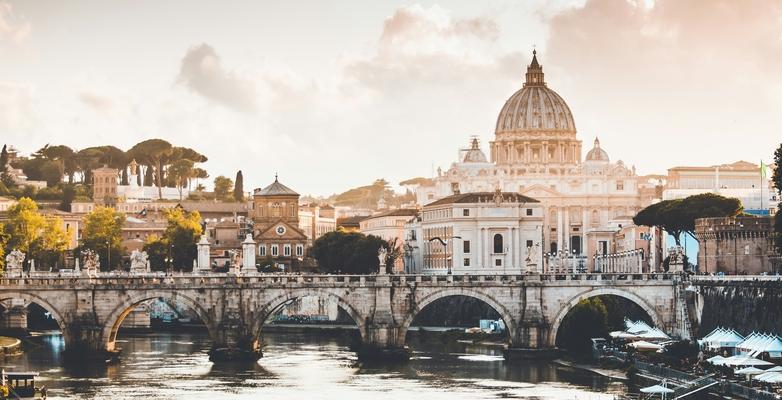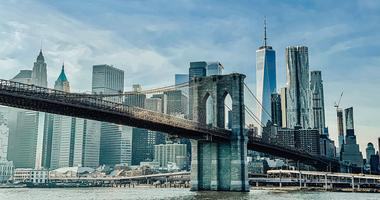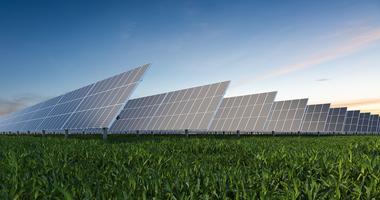
How the Climate Crisis is Impacting Italy
Italy can position itself as a leader and benefit from the transition to a low-carbon economy. It just has to stand up now for a safer, more sustainable future powered by clean energy.
7 min read
The climate crisis is intensifying extreme weather events like heat waves, droughts, floods, and storms all around the world. These events damage property, disrupt lives and livelihoods, and can even be deadly.
Italy is one country that’s on the front lines of extreme weather events and other impacts due to the climate crisis – and it’s having a cascading impact on the European nation, affecting everything from public health to agriculture and infrastructure.
Rising Temperatures
Average annual temperatures in Italy have risen by 1 degree Celsius in the last 100 years, according to the International Energy Agency, with an even faster increase in recent decades.
This warming has been especially prevalent in the spring and summer, at high altitudes, and has resulted in more and more heat waves baking the peninsula. Indeed, heat waves have become a major, pressing concern for Italy as our climate continues to change.
Last summer, a heat wave the Italian Meteorological Society named “Cerberus” – the three-headed monster from Dante’s “Inferno” – baked Italy with temperatures soaring past 45°C (113° Fahrenheit) in some parts of the country. The long-lasting “heat dome” became so intense that Italy’s health ministry “issued a red alert (meaning ‘risk of death’) in 27 cities,” CNN reports.
Important tourism centers like Rome, Florence, and Bologna were among them. Later that same summer (2023), in northern Italy, Milan posted its highest average daily temperature in 260 years.
Heat waves have a severe impact on public health, worker safety, and infrastructure, in Italy and beyond.
They cause a significant rise in heat-related illnesses and deaths, particularly among vulnerable populations like the elderly, children, and those with pre-existing health conditions. Working outdoors during extreme heat is especially dangerous.
In 2022, over 18,000 heat-related fatalities were reported in Italy. In total, 61,672 deaths across Europe were attributed to the heat in what was said to be Europe’s hottest summer on record.
High temperatures and dry conditions (more on that below) are also creating the perfect conditions for wildfires, damaging property and ecosystems and creating poor air quality. At least four people died across southern Italy and on the island of Sicily in 2023 as numerous fires burned across the Mediterranean region – something that has become an unfortunate yearly phenomenon.
And at the same time, while air conditioning isn't as common in Italy as it is in some other countries, use is growing, putting a strain on energy grids and even leading to blackouts in major cities like Rome as people try to stay cool amid the increasingly oppressive temperatures.
The story of extreme heat and Italy looks increasingly dire – unless we take fast action to slash emissions. If the world continues on a high-emissions pathway, by 2050, average annual temperatures in Italy could increase by as much as 2.4°C, making extreme weather events like the heat waves and wildfires the country is currently seeing even more frequent and severe.
Water Woes
Increased temperatures and changes in precipitation patterns are causing more frequent droughts in some parts of Italy, while other regions experience extreme flooding. This creates major disruptions for agriculture, water supplies, and even energy generation.
Drought, in particular, has become a growing problem for Italy in recent years.
“The drought that hit northern Italy in 2022 was unprecedented in more than two centuries, and is part of a long-term trend of more frequent and severe drought in the area,” Nature writes.
The year 2022 was particularly severe, with the Po River, Italy's longest and most vitally important river, experiencing record low water levels. This dry-out, in turn, put as much as 40% of Italy’s agriculture sector in jeopardy.
Italian agriculture is a crucial sector for the economy and national identity – and reduced water availability because of drought harms crops and leads to harvest losses and economic hardship for farmers. The 2022 drought in northern Italy alone caused as much as €6 billion ($6.5 billion US) in agricultural damage and jeopardized thousands of farms.
Also impaired by water shortages, particularly in mighty rivers like the Po: electricity generation.
Hydropower is a significant source of energy in Italy, providing nearly one-fifth of the nation’s energy demands. When droughts reduce water flow in rivers, hydropower generation capacity suffers – in Italy, “From January to May 2022, hydro production fell by about 40 percent compared to the corresponding period in 2021,” according to AFP (via Phys.org).
This can worsen energy shortages more broadly, especially when it comes at a time when it’s combined with other factors – like Italy’s desire to cut back on its dependence on Russian gas following that nation’s invasion of Ukraine.
Looking ahead, experts predict that droughts will likely become more frequent and intense in Italy due to the climate crisis. Alongside the agricultural and energy generation-related impacts discussed above, these dry conditions will also further increase the risk of wildfires like those the nation has seen the last several years.
On the flip side of this particular coin, “climate change’s all-or-nothing weather extremes” have meant that some areas of Italy have experienced deadly flooding at the same time that others have remained parched.
“The coastal region of Emilia-Romagna was struck twice, first by heavy rain two weeks ago on drought-parched ground that could not absorb it, causing rivers to overflow overnight, followed by this week’s deluge that killed 14 and caused damages estimated in the billions of euros,” the AP News writes. “In a changing climate, more rain is coming, but it’s falling on fewer days in less useful and more dangerous downpours.”
This dynamic of precipitation extremes is likely to only be amplified across Italy as our world continues to warm.
Sea Level Rise
Italy is a peninsula and island nation, with 7,600 km (about 4,700 miles) of coastline – the fifth longest in Europe and 14th longest in the world. It touches the Mediterranean, Ionian, and Adriatic seas.
And sea levels are rising. Why?
It’s simple: As humans burn more and more fossil fuels, the world is getting warmer, leading glaciers and land ice in places like Greenland and West Antarctica to break apart and melt. The melted ice becomes water that flows into the oceans, and all that extra water then causes sea levels to rise.
Sea level rise for Italy has been estimated at 1.64 millimeters (0.06 inches) per year since 1903. By 2050, under a low-emissions scenario, sea levels in Italy may rise 0.18 meters (more than half a foot) and as much as 0.23 meters under a high-emissions scenario.
This increase in sea levels has been most acutely felt in one of Italy’s most historic (and important to tourism) cities: Venice.
Venice is made up of over 118 small islands and sits in a lagoon in the Adriatic Sea. And at the same time that seas are rising, the city is sinking. The city is built on an unstable foundation – one that is naturally subsiding.
“The foundations of Venice's buildings are constructed using a system of piles,” the BBC writes, “long lengths of timber that are pushed vertically into the loose mud and clay of the lagoon below. The solid bedrock of the lagoon is far further below the surface than this mud, so the foundations are being pushed into a more substantial, but still slightly vulnerable, layer of compressed clay.”
Venice has also experienced a natural phenomenon called “acqua alta” (high water) – periods where the city has flooded temporarily at different times in the year – during high tides for centuries. But rising sea levels are making these events more frequent and severe. Areas that flooded occasionally in the past are now underwater more and more often, damaging buildings and infrastructure.
In a city famous for its beautiful and historic buildings, saltwater intrusion from rising seas is further damaging structures, leading to costly repairs – and a potential loss of cultural heritage. One event, in November 2019, left more than 80% of the city underwater, prompting a state of emergency declaration and creating more than €1 billion euros ($1.1 billion US) in damages.
The Italian government has implemented some measures to protect Venice, like the MOSE project, a system of inflatable gates designed to block certain high tides. However, this project has faced delays and cost overruns.
The future of Venice is uncertain with rising sea levels. Flooding has become a threat to daily life for many Venetians and could result in economic losses due to lost tourism revenue. It’s even a threat to public health – as use of flood gates at times of particularly high tide could result in sewage being trapped in the lagoon.
The city is fighting for its survival and needs innovative and long-term solutions to adapt to this changing environment.
What’s Next?
Looking ahead, experts predict that extreme weather events will likely become even more common and severe in Italy.
The impact on the Italian economy could be significant. Without strong action to reduce emissions, Italy's GDP could shrink by 3.7% by 2050 due to factors like damage from extreme weather and disruptions to key sectors like agriculture and tourism. That number rises to 8.5% by 2100 without swift climate action.
Italy is taking steps to address climate change, but much more needs to be done to mitigate the worst impacts.
Good thing there are numerous potential opportunities for action in the country. From investing in renewable energy and sustainable, efficient infrastructure to climate-resilient agriculture, Italy can create new jobs and stimulate economic growth by acting on climate.
The country can position itself as a leader and benefit from the transition to a low-carbon economy. It just has to stand up now for a safer, more sustainable future powered by clean energy.
Ready to discover more about how Italy can become a climate leader in Europe and in the broader world? Become a climate leader by attending our Climate Reality Leadership Training in Rome this June.
Led by Climate Reality’s founder and chairman, former US Vice President Al Gore, and featuring advocates and experts from a wide range of fields, our foundational Climate Reality Leadership Trainings provide attendees with a deeper understanding of how the climate crisis is transforming our world today and the solutions in our hands.
Train with us from June 28-30 and join a community of changemakers working for just climate solutions worldwide.




